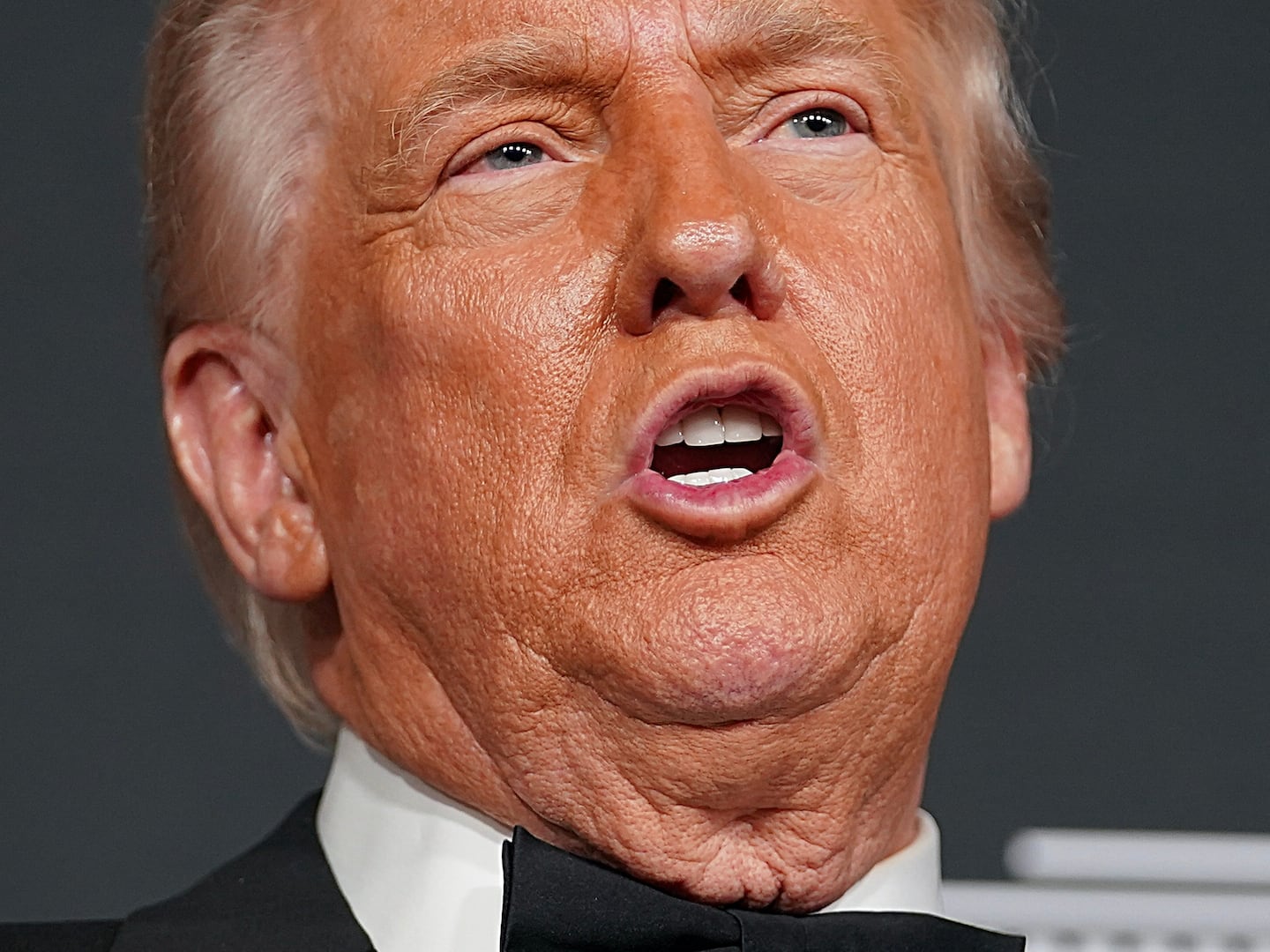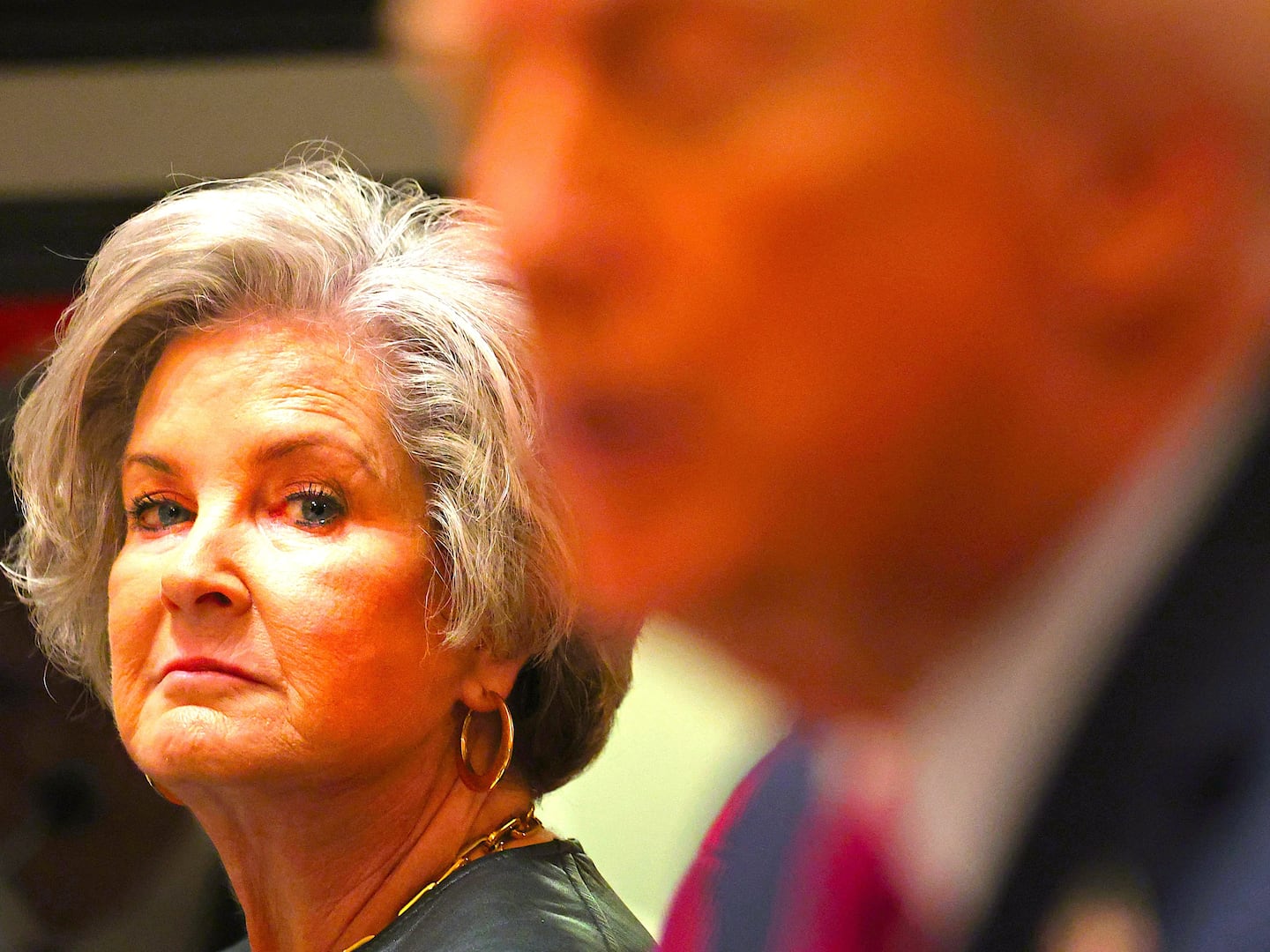Yesterday, The Daily Beast published an exclusive report chronicling the filming of Roe v. Wade, an anti-abortion movie beset by chaos.
The brainchild of Nick Loeb, a wealthy conservative banking heir most famous for his embryo battle with ex-fiancée Sofia Vergara, and his producing partner Cathy Allyn, Roe v. Wade depicts the events leading up to the landmark 1973 Supreme Court decision that granted women the legal right to have an abortion—a very timely film given Justice Anthony Kennedy’s recent retirement announcement. It began filming on June 15 in and around New Orleans under the fake title 1973, with the shoot set to wrap on July 15.
Crew members subsequently came forward to The Daily Beast, complaining about various production problems—from cast, crew and locations abandoning the project after learning they’d been misled on the extremity of the film’s anti-abortion content to the sheer directorial incompetence of first-timers Loeb and Allyn. Much of the cast and crew were also kept in the dark concerning two of the film’s controversial cameos: Tomi Lahren and Milo Yiannopoulos, the latter portraying a callous British doctor who performs 32 abortions in five hours.
The Daily Beast has obtained a copy of the film’s shooting script that sheds even more light on its severe anti-abortion stance.
Roe v. Wade is told through the eyes of Dr. Bernard Nathanson (Loeb), an obstetrician and co-founder of the National Association for the Repeal of Abortion Laws (NARAL) who, after witnessing (via ultrasound) an abortion being performed, transformed into a fierce anti-abortion activist. Nathanson also narrates the proceedings, in an apparent nod to 1984’s controversial anti-abortion propaganda film The Silent Scream.
The rest of the cast is a who’s-who of conservative Hollywood. There’s Stacey Dash as Dr. Mildred Jefferson, a founder of the National Right to Life Committee; Jamie Kennedy as abortion-rights activist Larry Lader; Joey Lawrence as Robert Byrn, a Fordham University law professor who fought against abortion; Greer Grammer (daughter of Kelsey) and Justine Wachsberger as Sarah Weddington and Linda Coffee, the attorneys representing Norma McCorvey, aka Jane Roe, in Roe v. Wade; Octavius Prince as abortion-rights lawyer Cyril Means; and Lucy Davenport as Betty Friedan. The Supreme Court justices are played by Jon Voight (Justice Burger), Robert Davi (Justice Brennan), Corbin Bernsen (Justice Blackmun), John Schneider (Justice White), William Forsythe (Justice Stewart), Wade Williams (Justice Rehnquist), Richard Portnow (Justice Douglas) and Jarrett Ellis Beal (Justice Marshall).
Roe v. Wade opens on a strip mall in rural Florida. It’s 1993. An “attractive woman” enters an abortion clinic only to exit, leaving behind her bag. As she walks back towards her car, the clinic explodes. “We have been in our 2nd civil war for over 50 years now. Bombing clinics and murdering doctors was hypocrisy,” narrates Nathanson.
About ten pages in, however, things take a very pro-life turn. The year is 1966, and elderly Margaret Sanger, the world’s preeminent birth-control activist, is speaking to Larry Lader on her deathbed. Just before she passes, her dying words to Lader are as follows: “We do not want word to go out that we want to exterminate the Negro population,” she says. “Larry, they can’t see this coming.” The reproductive rights movement is thus framed by the film as a racist plot on a par with Hitler’s Final Solution.
This oft-repeated conservative falsehood, shared by everyone from Herman Cain to Ben Carson, stems from the willful misinterpretation of a 1939 letter Sanger wrote wherein she outlined her plan to connect with prominent leaders in the African-American community and allay their possible fears concerning family-planning clinics. Sanger wrote, “We do not want word to go out that we want to exterminate the Negro population, and the minister is the man who can straighten out that idea if it ever occurs to any of their more rebellious members.”
While Sanger did dabble in eugenics, PolitiFact has repeatedly debunked the claims that Sanger bore great racial animosity against African-Americans. The fact-checking website cited Jean H. Baker, author of the biography Margaret Sanger: A Life of Passion, who maintained that Sanger “was far ahead of her times in terms of opposing racial segregation,” as well as author Edwin Black, who wrote in his book critical of the eugenics’ movement, War Against the Weak, that “Sanger was no racist.”
Rather, “Sanger’s correspondence shows this sentence advocates for black doctors and ministers to play leadership roles in the Negro Project to avoid misunderstandings. Lynchings and Jim Crow laws gave blacks good reason to be wary of attempts to limit the number of children they bore. In Harlem, [Sanger] hired a black doctor and social worker to quell those fears,” explained PolitiFact. “She attracted an impressive roster of supporters, including Du Bois; Mary McLeod Bethune, founder of National Council of Negro Women; and the pastor of the Abyssinian Baptist Church. Eleanor Roosevelt also backed the effort. For Sanger to launch a genocidal plot behind their backs and leave no true evidence in her numerous writings would require powers just shy of witchcraft.”
“After reading the script, you realize no, this isn’t opinion, this is lies and propaganda that they’re trying pass off within some historical context,” a crew member on the film, speaking on the condition of anonymity, told The Daily Beast. “With the Margaret Sanger quote, they twisted it and used it to discredit everything that she possibly did. It’s similar to what the right-wing media is doing now: they take one thing that someone said—or even half-said—and then they turn it into something that isn’t true in order to discredit everything they’ve ever done.”
In addition to Sanger, the villains of Roe v. Wade are undoubtedly the abortion-rights movement’s inner circle, consisting of Larry Lader, Cyril Means, Dr. Nathanson and Betty Friedan. They’re depicted as a shady cabal of rich lefty Jews who meet in exotic locations like St. Croix and the Russian Tea Room to boast about the money they’re raking in through abortions—over daiquiris or pastrami sandwiches. “It pays to fight for a good cause!” Lader exclaims at one point before the crew clinks martini glasses; at another, Dr. Nathanson sings a song that goes “There’s a fortune… in abortion,” which he’d referenced in his book Aborting America.
The film posits that the abortion-rights’ activists “have Hollywood on their side,” and paid $10,000 for Golden Girls’ famous abortion episode (it was Maude, not Golden Girls), as well as “put pro abortion stories into TV shows and movies” like Cabaret. They’re also said to have influence over the media, with Lader boasting, “We control the media… They write whatever we tell them.” If that weren’t enough, there’s a sequence at the Playboy Mansion where Playboy Playmates are auctioned off as dates, with all the money raised going towards Planned Parenthood and NARAL.
Roe v. Wade’s screenplay, which is credited as written by Loeb with revisions by Allyn, is riddled with typos, inaccuracies and misquotations. The Robert Byrn character, played by Joey Lawrence, is essentially a walking fake-famous-quote meme, saying, “Any society that would give up a little liberty to gain a little security will deserve neither and lose both – Benjamin Franklin.” (The real quote: “Those who would give up Essential Liberty, to purchase a little Temporary safety, deserve neither Liberty nor Safety.”) Later on, Byrn quotes Abraham Lincoln: “To sin by silence when they should protest makes cowards of men.” The problem? Lincoln never said this; activist Ella Wheeler Wilcox did.
The script further says that Beethoven was one of four children, with one of them dying young (it was seven total, with only three surviving infancy); that JFK “felt that abortion was repugnant to all Americans” (a misquotation, as JFK was specifically referring to the ways the Japanese were limiting population through abortion, and was a birth-control advocate); it quotes a Planned Parenthood pamphlet from 1963 that was actually released in 1952; and has Betty Friedan still married to her husband Carl in 1971, even though they divorced in 1969.
One of the more ridiculous scenes in the film concerns an exchange between Professor Byrn and one of his Fordham University law students, with Byrn (again, played by Joey Lawrence) arguing that Martin Luther King Jr. was anti-abortion. It’s an entirely unsubstantiated claim that’s frequently put forth by those on the right—including Alveda King, Martin Luther King Jr.’s niece and an executive producer on Roe v. Wade. In reality, Dr. King was a passionate supporter of both Planned Parenthood and the birth-control movement. According to ThinkProgress, “In 1960, King served on a committee for a Planned Parenthood study on contraception, explaining, ‘I have always been deeply interested in and sympathetic with the total work of the Planned Parenthood Federation.’ He repeatedly wrote about why family planning programs are important, and why they need to be funded by the government. In 1966, King received a Margaret Sanger award from Planned Parenthood ‘in recognition of excellence and leadership in furthering reproductive health and reproductive rights.’”
King’s acceptance speech read, “Margaret Sanger had to commit what was then called a crime in order to enrich humanity, and today we honor her courage and vision; for without them there would have been no beginning. Our sure beginning in the struggle for equality by nonviolent direct action may not have been so resolute without the tradition established by Margaret Sanger and people like her.”
In an interview with The Hollywood Reporter, Loeb alleged that Roe v. Wade “will be a PG-rated film.” If that were to be true, it would have to deviate big-time from its screenplay, which features several graphic scenes that would surely land the film an R-rating (or worse).
Roe v. Wade contains a fictional sequence set in 1971, where police officers conduct a sting operation on a “Dr. Ketchum” in a suite at Chicago’s Sunrise Hotel. The cops manage to tackle Dr. Ketchum before he performs an illegal abortion, and discover “a dozen buckets of tiny fetuses and baby parts” in the hotel room. The scene is likely an exaggerated version of that which befell Dr. Jesse Ketchum, a real-life doctor from Buffalo, New York, who was sentenced to three years in prison after a woman died shortly after undergoing an abortion procedure at his office in 1971. There is also the aforementioned sequence with Milo Yiannopoulos’ Dr. Sopher, tracking him as he goes from room to room, coldly performing 32 abortions in five hours before bragging about his efficiency and profitability. And then there’s a scene taking place at the Boston University Medical Center in 1973 that sees Stacey Dash’s Dr. Mildred Jefferson watch The Silent Scream, observing the ultrasound of a fetus experiencing an abortion (The Silent Scream was not released until 1984, and many in the medical community have questioned its accuracy).
A crew member confirmed the film’s gruesomeness to The Daily Beast, saying, “There are scenes with buckets of bloody fetuses. It’s just completely over the top.”
In case the message hasn’t been hammered home already, Roe v. Wade ends with footage from the Center for Medical Progress’ notorious undercover videos of Planned Parenthood employees allegedly selling fetal tissue. The videos, it’s since been proven, were heavily edited so as to twist the PP employees’ statements, and rather than bring charges against PP, an investigation into the clips led to felony charges against CMP founder David Daleiden and CMP employee Sandra Merritt.
Then come the film’s final lines, courtesy of Loeb (as Dr. Nathanson): “You took away the rights of the unborn. A child cannot speak to defend themselves today. Who is the voice of the children who cannot speak for themselves?” He turns to the camera, and, addressing the audience, says: “You, you speak for them.”
Loeb explained his motivations for making the film in a recent interview with The Hollywood Reporter, connecting the project to his ongoing legal battle over the embryos he’d had frozen with ex-fiancée Sofia Vergara: “I have my own pro-life issue going on with my fight over embryos, but no one has really told the whole truth about Roe v. Wade in a film. When I delved into this, I discovered conspiracy theories, fake news, made-up statistics and a whole lot of people involved who switched their positions from pro-choice to pro-life, including Norma.”
Asked whether it was just a coincidence that Loeb’s decided to film his anti-abortion movie in Louisiana, the very state where he’s filed suit against Vergara so he can use their embryos without her permission, one crew member offered: “I don’t think it’s a coincidence. I think the two are definitely tied together. I don’t know what his motive is, to give a face to embryos? If so, that’s a pretty expensive face.”
“We’ve been told that the film will open in 1,000 theaters,” they added, “but everyone’s been lied to so much that we have no idea what’s true anymore.”






